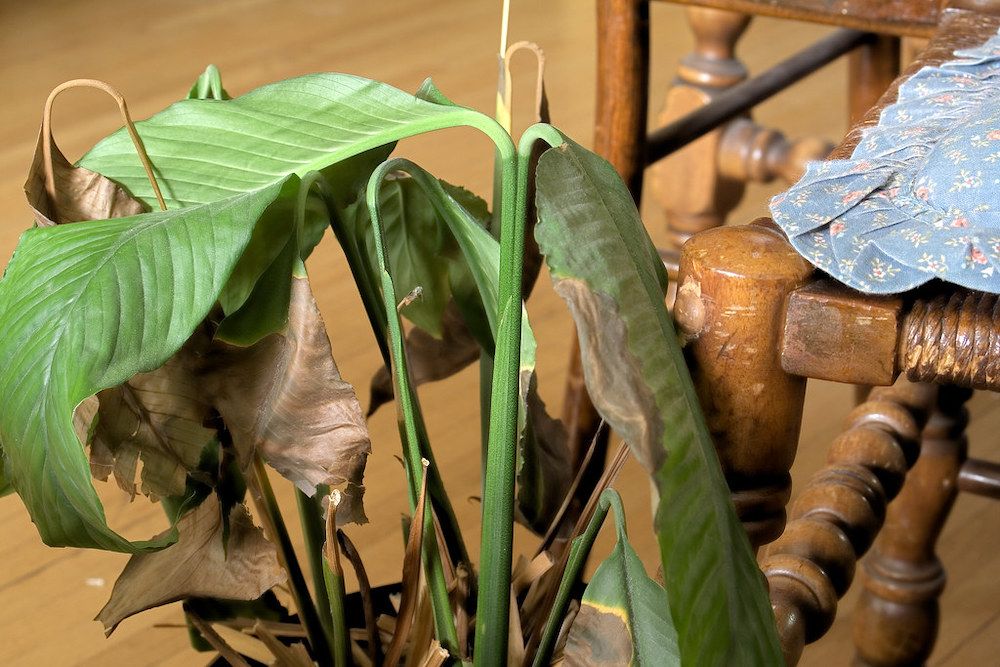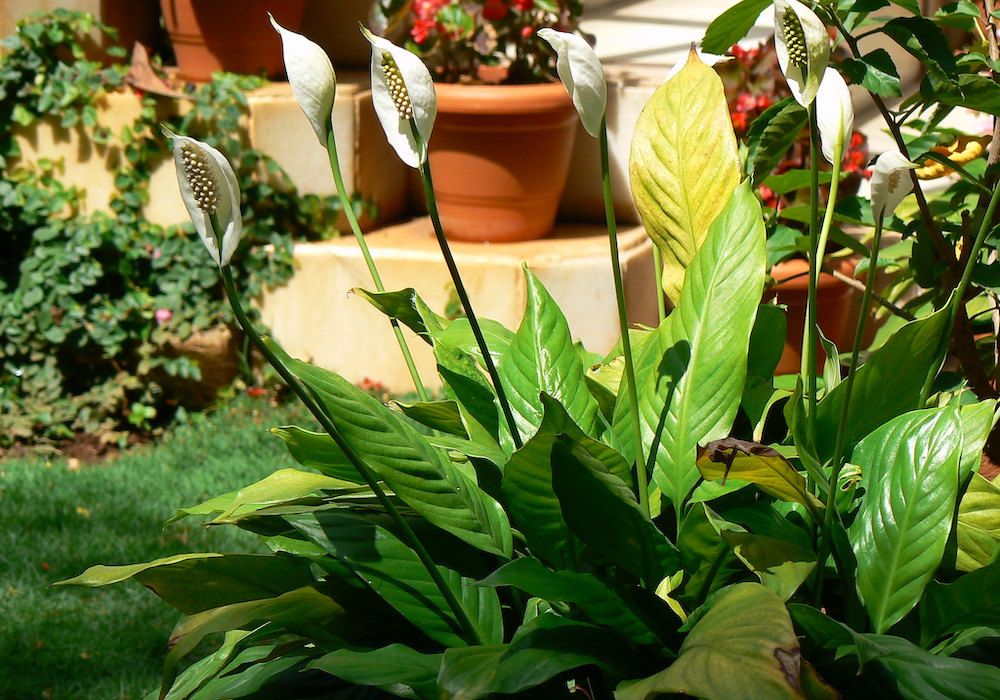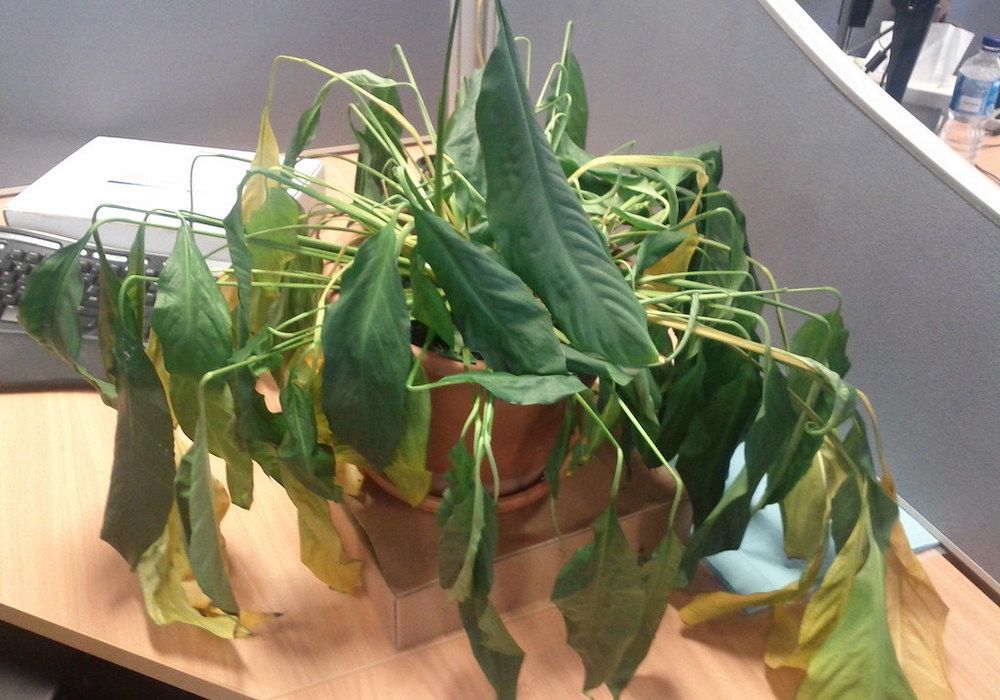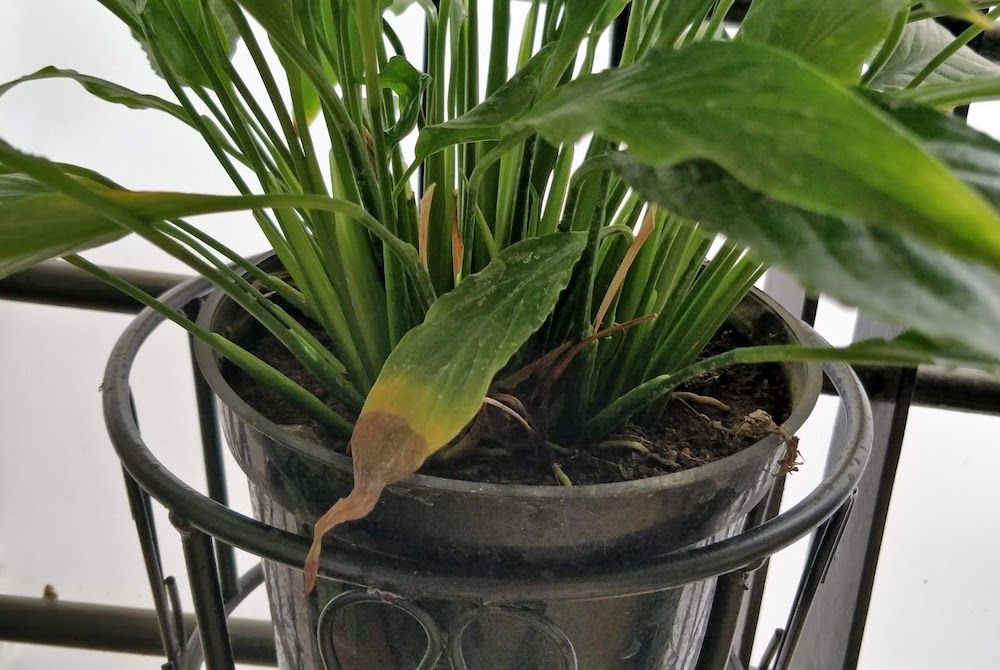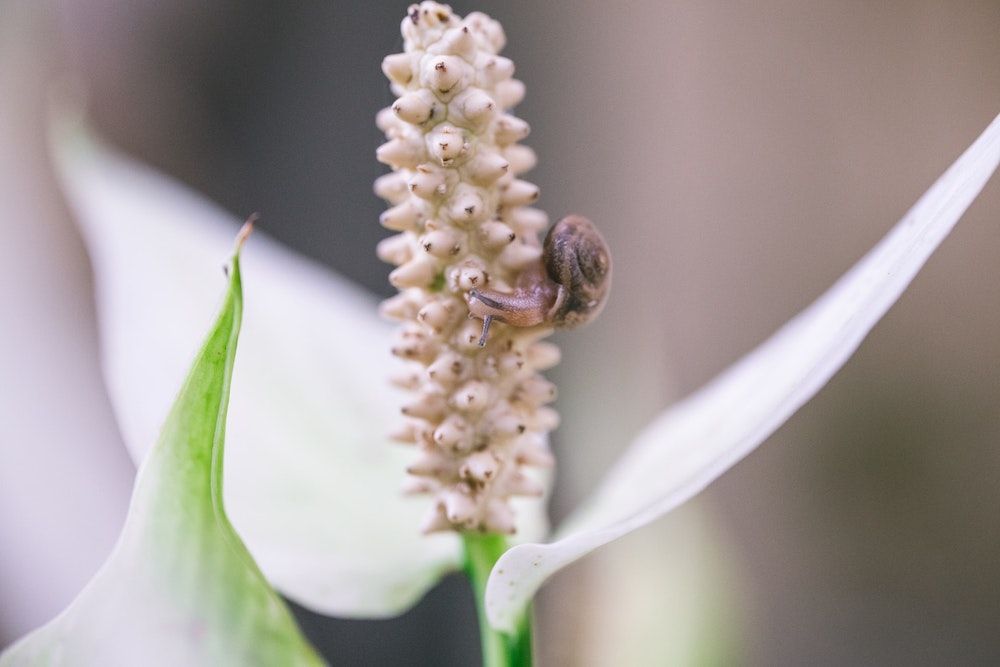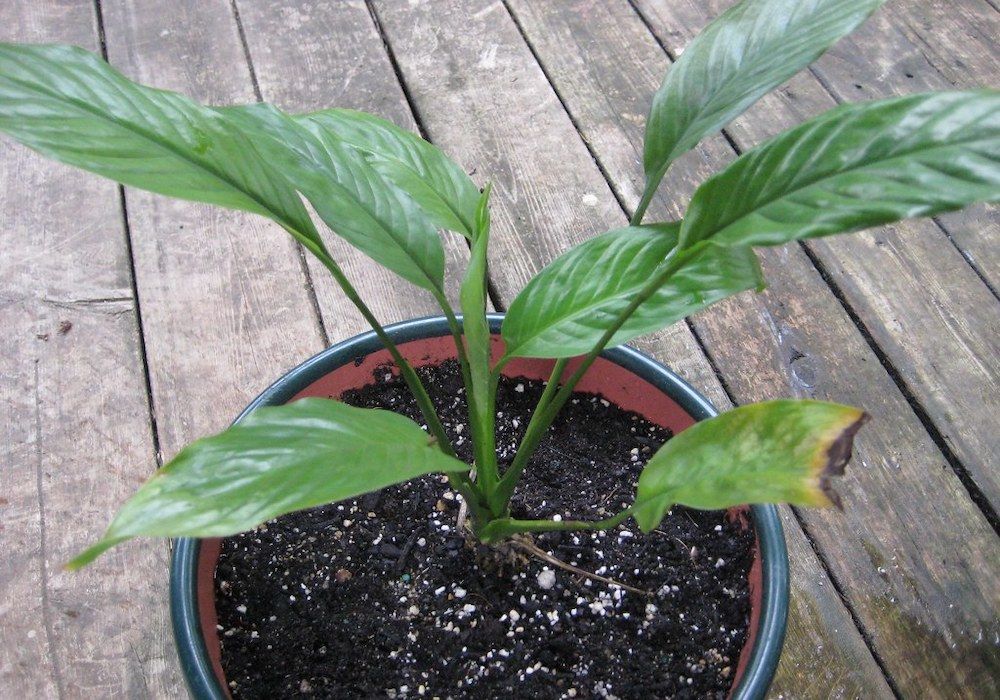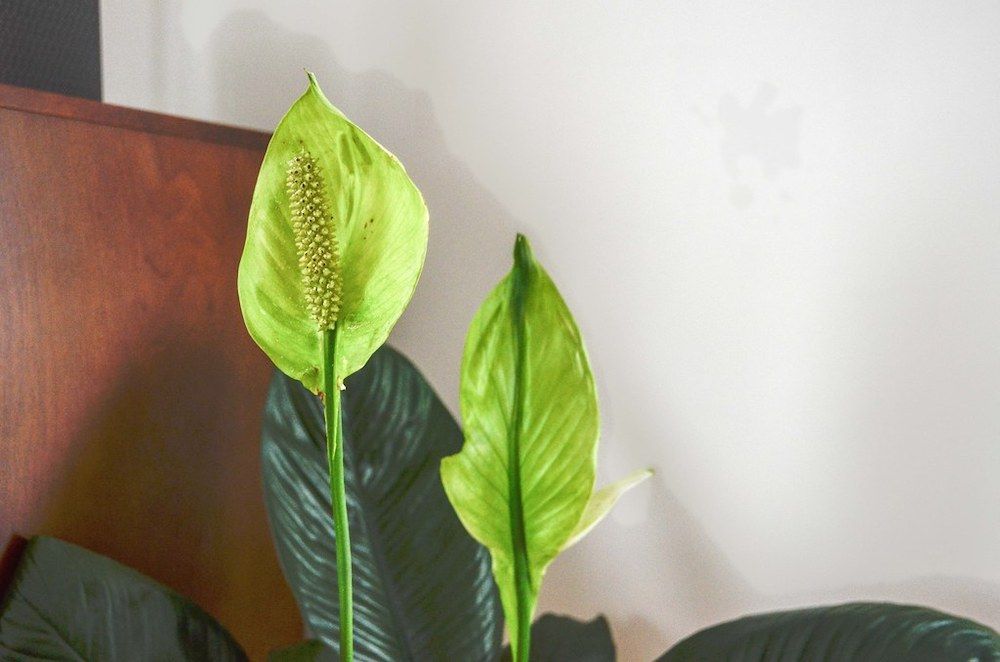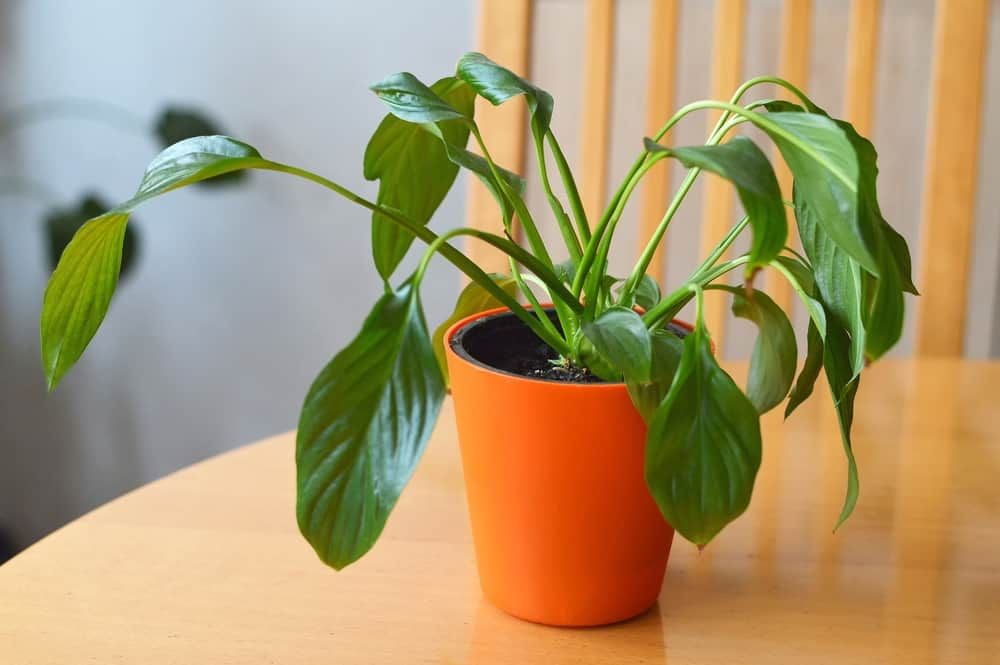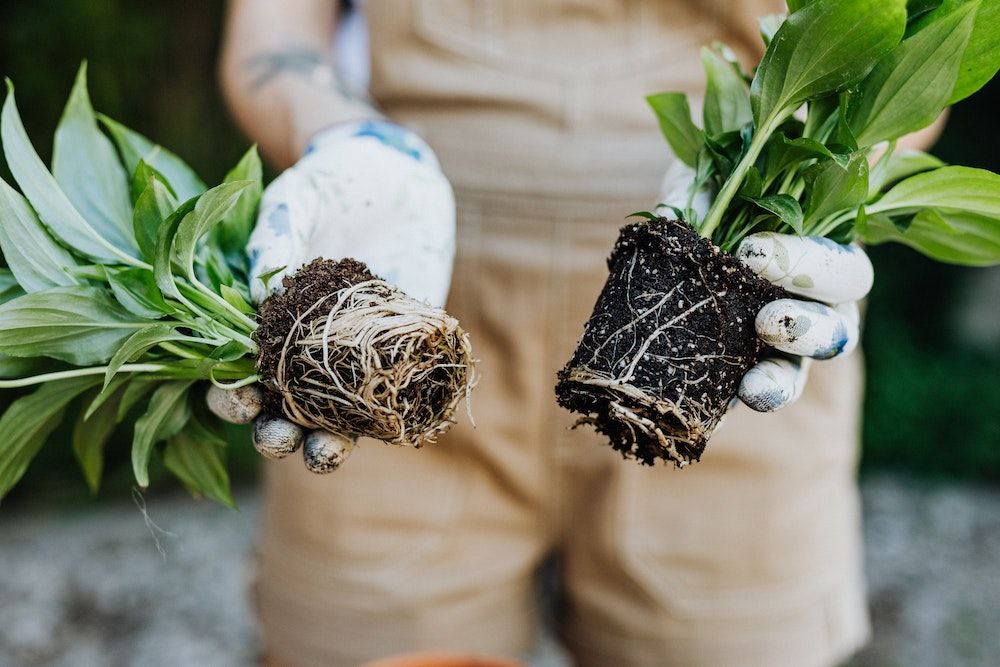Peace lily plants are some of the easiest houseplants you can grow indoors that require very little care and maintenance. As a result, they’re a popular choice for offices and indoor landscaping.
With its smooth, white blossoms and bright green leaves, the peace lily can effortlessly infuse tropical vibes into your space. Although peace lilies are somewhat tough and resilient, they are susceptible to a few pests and diseases. Below you’ll learn more about nine peace lily problems and how to fix them.
9 Peace Lily Problems and How To Fix Them
1. Brown Leaves
Image credits: Unhindered by Talent via Creative Commons
A healthy peace lily plant’s leaves are a mix of vibrant green and mature dark green. If your plant’s leaves are turning yellow, it can be because:
|
Your plant is receiving too much direct sunlight |
|
It lacks sufficient humidity levels |
|
You’re underwatering the plant |
|
You’re overfertilizing your plant |
How to Fix It
First, remove your plant from direct sunlight and place it near a window that receives bright indirect sunlight. Next, use a good-quality humidifier to raise humidity levels. If you don’t have a humidifier, use a humidity tray or place your peace lily pot on a pebble tray to increase humidity levels. The best temperature to grow peace lilies is between 65 to 85 degrees Fahrenheit.
After fixing the humidity, it’s time to water your plant, but don’t overdo it. Invest in a good soil moisture tester to see if your plant needs a drink, or test the soil yourself by sticking your finger in and pulling it out. If it feels dry, your plant needs a drink, and if it’s moist, check again in 24 hours.
If you fear you may have overfertilized your plant, flush the soil with plenty of rainwater about two to three times the volume of the pot. To do this, place your plant in the sink, open the tap and let a gentle lukewarm stream of water run through the soil for a few minutes to remove salt build-up.
2. Yellow Leaves
Image credits: Dinesh Valke via Flickr
Like brown leaves, yellow leaves indicate that your plant needs help. Your plant’s lush leaves turn yellow because:
|
You’re overwatering your plant |
|
There’s a sudden drop in temperatures (below 65 degrees Fahrenheit) |
How to Fix It
Poor soil structure retains moisture that causes root rot and plant death. Heavy soils can also become compacted, causing poor drainage and waterlogging issues that ultimately kill the plant.
Check your plant’s soil quality and structure, and if needed, repot your plant using a fresh well-draining potting mix. After repotting your plant, sprinkle water twice daily for a few days and then return to your regular watering schedule. Remember to check the soil’s moisture levels before watering your plant to prevent overwatering it again.
Peace lilies can’t tolerate cold drafts and thrive in higher temperatures so when it’s cold outside, keep your plant in a heated room, away from non-insulated windows and doors.
Note: Yellow leaves without wilt can also mean aging leaves. When the plant starts to flower, aged leaves turn yellow. This doesn’t mean the plant is sick, but you can cut off the yellow leaves so the plant can redirect energy toward its blooms. This typically occurs in early September,
3. Droopy or Curled Leaves
Image credits: akent via Creative Commons
Your plant’s perky leaves start drooping because:
|
You’re underwatering your plant |
|
It’s exposed to too much heat and direct sunlight |
|
It’s suffering from transplant shock |
How to Fix It
Peace lily loves to stay hydrated but don’t like wet feet. Underwatering is the leading cause of drooping or curled leaves, so check the soil to see if your plant needs a drink (or two!).
If underwatering isn’t the reason, maybe exposure to constantly hot temperatures or too much direct sunlight is the issue. Hot temperatures can cause your plant’s water to evaporate faster than it can absorb through the roots. Move your plant to a shaded spot in a cooler room to fix overheating and direct sunlight.
Transplant shock can also cause droopy leaves, but this is often temporary and should fix itself in a couple of days post-transplant, provided you don’t overwater your plant.
4. Brown Tips
Image credit: Lakeisha Ethans for Backyard Boss
Peace lilies can be picky, but if you spot brown tips, that’s because:
|
The water you use to water them contains too much chlorine or fluoride |
|
You’re watering them with hard water (water with high mineral content) |
|
You overfertilized your plant |
How to Fix It
While you can’t do much about fluoride, you can remove the water’s chlorine content by boiling it for 20-30 minutes. Let the water cool to room temperature before watering your plants. In case of hard water or overfertilization, flush the soil using dechlorinated water, or rainwater, to remove excess salt content.
Note: Low humidity could also be the reason your peace lily has brown tips on its leaves. It will thrive it humid areas over 50 percent humidity.
5. Pest Attack
Image credits: Delaney Van via Unsplash
If you spot snails, aphids, powdery mildew, scale, or mealybugs on your precious plant, it’s time to act fast to stop the spread.
How to Fix It
Use a soft clean towel and an organic fungicide to wipe the leaves if you spot pests or powdery mildew. Make sure not to neglect the undersides. Remove snails and quarantine your plant in a well-lit and airy room to prevent the rise and spread of mold or fungal growth.
Use DIY organic garden sprays or look for other natural ways to eliminate houseplant pests before they spread to your other plants. Neem oil has many benefits, and you can use it as an organic insecticide to eliminate pests and diseases.
6. Not Flowering
Image credits: madaise via Creative Commons
There are a few reasons why your plant isn’t flowering as much as it used to when you first brought it home. This is because:
|
Your plant lacks adequate lighting |
|
It’s under-fertilized |
|
It has become rootbound |
How to Fix It
Peace lilies need proper lighting to grow bracts. Ideally, they prefer lots of indirect sunlight to bloom. Move your plant to a well-lit area and add organic fertilizers (one-quarter of the recommended strength) to boost flower growth.
Your plant also won’t flower if it’s rootbound. If your plant’s roots are poking through the pot’s drainage holes, repot it in a container 2-3 inches bigger than the current one.
7. Green Flowers
Image credits: osiristhe via Creative Commons
When you visualize peace lilies, the first or second thing that comes to mind is the classic white flowers. So it can be confusing when you see your plant’s flowers turning bright green. This happens because:
|
It’s not growing in the right environment |
|
You overfertilized your plant |
|
They’re receiving too much direct sunlight |
How to Fix It
While there’s nothing wrong with green flowers, it’s probably not what you’re looking for. White flowers stand out better than green flowers that camouflage with green leaves. If your plant receives too much direct sunlight, its flowers will turn green and die faster.
Overfertilizing your plant will also cause green blooms. To fix this, place your plant away from direct sunlight, correct humidity levels, and flush the soil to remove excess salt build-up from overfertilization. Unfortunately, you can’t change the color of your current green blooms, but all future flowers will be white.
Note: It's important to keep in mind that green flowers are also part of the blooming process, so be mindful around this time. Before the blooms die off for the season they will turn a shade of green. This also occurs just before the peace lily flower turns a magnificent white.
8. Stunted Growth
Image credits: izzzy71 via Shutterstock
Wondering why your plant hasn’t grown much since you brought it home? If your plant doesn’t bloom or grow new leaves, its growth is restricted. Stunted growth occurs if:
|
The plant has become rootbound |
|
It’s growing in poor soil |
|
It lacks organic fertilizer |
How to Fix It
Repot your plant in a pot 2-3 inches larger than the current pot if it’s rootbound. This way, your peace lily’s roots will have enough space to grow without having to poke through the pot’s drainage holes. When repotting, use high-quality potting soil that’s airy and well-draining for healthy plant growth. Apply organic fertilizers to your plant and keep it away from direct sunlight.
9. Mushy Stems
Image credits: Karolina Grabowska via Pexels
If you spot mushy stems that collapse when you touch them, you’ll need to act fast to prevent plant death. Mushy stems occur because:
|
You’re overwatering your plant |
|
Your plant’s soil lacks proper drainage |
How to Fix It
In simple terms, mushy stems mean your plant’s roots and stem are starting to rot. The only way to save your plant is by repotting it immediately in a pot with drainage holes and remove as much dirt from the plant as you can. Trim diseased roots and stem and gently remove compacted soil near the base and roots of your plant. Ensure the soil you use to repot your peace lily is light, airy, and drains well.
Tropical Drama Queen!
Despite being picky, the peace lily is an all-time favorite among most gardeners. They thrive in well-draining soils and prefer to sit in cool temperatures away from direct sunlight. Indirect light, organic fertilizers, and adequate humidity levels are required for this plant to flourish and bloom.
Hopefully, this article was helpful to you. Leave your experiences, thoughts, and questions in the comment section, and share the article if you like it.
Happy gardening!


